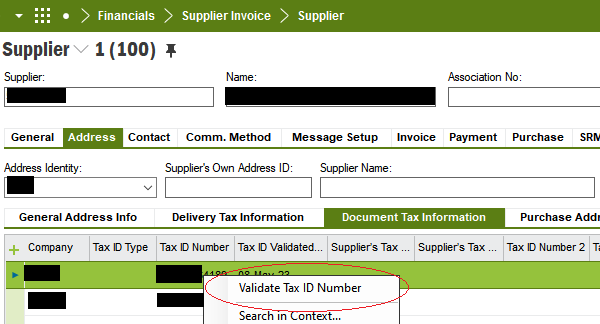When the RMB “Validate Tax ID number” on Supplier>Address>Document Tax Information intermittently hits the below error.
Tax ID Number ******** cannot be validated due to network problem.
Further investigations:
- The error mostly occurs when the action performed perpetually
- The validation actually executes via the client (tbwSuppDocumentTaxInfo.cs)
- Looks like a client limitation (threshold for MS_MAX_CONCURRENT_REQ)
Has this every happened to you?
Any clue will be highly appreciated.
Thank you.







